GENERAL DATA
Plant Parts: Fruit
Cultivation mode: Wild collection/Cultivated
In manufacturing: Pharmaceutical
In food: Its fresh fruit is used in food as salt
🌰 What Is Myrobalan (Terminalia chebula Retz.)?
Myrobalan is the dried fruit of Terminalia chebula, native to South and Southeast Asia (including Iran, India, and China). Known as the “King of Medicines” in Ayurveda, it plays a vital role in classical formulations like Triphala and is revered for its detoxifying, digestive, and rejuvenating effects.
The dried fruits come in three main forms, each varying in appearance, harvest time, processing, and potency.
🟤 1. Black Myrobalan (Ink Nut / “Inky” Haritaki)
Also Known As: Inky Haritaki, Shyama Haritaki, Indian Ink Nut
-
Color: Dark brown to nearly black
-
Shape: Small, irregular, more shriveled
-
Processing: Harvested when fully ripe, then sun-dried without boiling
-
Taste: Astringent, bitter, slightly smoky
-
Traditional Use:
-
Most commonly used in detoxification and liver health
-
Known to have strong laxative and rejuvenating properties
-
Used in Ayurvedic Triphala formulation
-
-
Industrial Use:
-
Herbal laxatives, detox teas, hair powders, ink and dye industry
-
-
Main Market: India, Iran, Sri Lanka, Pakistan
✅ Most popular type for general herbal uses
⚠️ High in tannins – astringent action
🟡 2. Yellow Myrobalan (Golden Haritaki)
Also Known As: Peet Haritaki, Golden Harad, Yellow Haritaki
-
Color: Yellow to golden-brown
-
Shape: Medium-sized, plump, symmetrical
-
Processing: Harvested early and boiled before drying
-
Taste: Less bitter, more neutral
-
Traditional Use:
-
Used for skin health, mild detox, and cooling properties
-
Considered less heating, often used for pitta dosha in Ayurveda
-
-
Industrial Use:
-
Cosmetics (face masks, scrubs), calming teas, general tonics
-
-
Main Market: Used more in cosmetic and pitta-calming formulas
✅ Ideal for people with sensitivity to harsher astringents
🌿 Balancing and mildly detoxifying
🟢 3. Chebulic Myrobalan (True Haritaki / Vijaya Haritaki)
Also Known As: Vijaya Haritaki, Chebulic Myrobalan, True Harad
-
Color: Olive-green to brownish-green
-
Shape: Oval, larger, symmetrical, five prominent ribs
-
Processing: Often carefully shade-dried without boiling
-
Taste: Balanced—slightly sweet, astringent, and pungent
-
Traditional Use:
-
Considered the superior medicinal grade
-
Used in rejuvenation, mental clarity, digestive regulation
-
Appears in Chyawanprash, Triphala, and brain tonics
-
-
Industrial Use:
-
Premium-grade nutraceuticals, adaptogen formulas, rasayanas
-
-
Main Market: Ayurvedic & Unani medicine, premium herbal supplements
✅ Most potent and prized form in Ayurveda
🌟 Used in formulations aimed at longevity and vitality
🧾 Summary Comparison Table
| Type | Color | Shape | Processing | Key Benefits | Main Use |
|---|---|---|---|---|---|
| Black Myrobalan | Dark brown | Small, wrinkled | Sun-dried (unboiled) | Detox, liver health, laxative | General herbal use, Triphala |
| Yellow Myrobalan | Yellow-golden | Medium, rounded | Boiled then dried | Mild detox, cooling, skin-friendly | Cosmetics, gentle teas |
| Chebulic (Vijaya) | Olive-green | Large, ribbed | Carefully shade-dried | Vitality, digestion, mental clarity | Premium tonics, adaptogens |
🌑 Industries That Use Black Myrobalan (Terminalia chebula – Black Type)
Black Myrobalan, traditionally referred to as Shyama Haritaki, is a dark, sun-dried, fully ripened fruit of Terminalia chebula. This powerful botanical is renowned for its detoxifying, astringent, laxative, and antioxidant actions, forming the backbone of numerous classical medicinal preparations.
1. Pharmaceutical & Ayurvedic Medicine Industry
Black Myrobalan is a cornerstone in traditional systems of medicine like Ayurveda, Unani, and Persian folk medicine.
Key Uses:
-
Digestive Regulator: Supports regular bowel movements, used in chronic constipation.
-
Liver Cleanser: Traditionally used for detoxifying the liver and gallbladder.
-
Rasayana (Rejuvenative): Enhances longevity, used in formulations like Triphala and Chyawanprash.
-
Antimicrobial & Antiviral: Studied for its strong antioxidant, antiviral, and antibacterial effects.
-
Anti-ulcer & Anti-inflammatory: Protects gut lining, supports gut-brain axis.
✅ Common Forms: Capsules, powders, syrups, extracts, decoctions
✅ Used in: Triphala churna, Haritaki tablets, herbal laxatives
2. Nutraceutical & Functional Food Industry
Due to its polyphenol-rich profile, Black Myrobalan is gaining recognition in functional food supplements.
Applications:
-
Digestive tonics
-
Daily detox powders or gummies
-
Liver cleanse blends
-
Antioxidant capsules
✅ Often combined with: Turmeric, Licorice, Milk Thistle, Ginger
✅ Rising demand in organic supplement markets (EU, North America, UAE)
3. Herbal Tea & Beverage Industry
Though astringent, Black Myrobalan is used in detox and gut health infusions.
Use Cases:
-
Detox teas (often blended with Fennel seed, Senna, or Mint)
-
Sleep or calming blends (paired with Valerian root or Chamomile)
-
Digestive bitters in traditional medicine shops
✅ Format: Dried powder or crushed fruit in sachets or loose-leaf blends
4. Cosmetic & Personal Care Industry
Rich in tannins and antioxidants, Black Myrobalan is used in Ayurvedic beauty care.
Applications:
-
Hair growth and scalp tonics
-
Anti-acne and anti-blemish masks
-
Herbal toothpowders
-
Natural exfoliants
✅ Common products: Haritaki oil, herbal shampoos, detoxifying masks
5. Textile & Leather Industry (Dyeing & Tanning)
Due to its high tannin content, Black Myrobalan has long been used as a natural mordant and tannin agent.
Applications:
-
Pre-dye treatment for cotton and silk
-
Leather tanning (vegetable tanning)
-
Ink production (especially traditional Persian and Indian ink)
✅ Eco-friendly and sustainable tannin alternative
6. Spiritual, Cultural & Ritual Use
In various Ayurvedic, Tibetan, and Persian spiritual traditions:
-
Used in cleansing rituals
-
Burned in purification ceremonies
-
Considered a “Rasayana” or soul purifier
✅ Traditionally included in spiritual detox baths or incense
7. Animal & Veterinary Use
In rural and traditional settings, Black Myrobalan is used in livestock wellness:
-
Deworming powders for ruminants
-
Herbal digestive aids for cattle and horses
✅ Still practiced in regions of India, Iran, and Nepal
✅ Summary of Key Applications
| Industry | Common Uses |
|---|---|
| Pharmaceutical & Traditional | Digestive, liver health, Triphala, anti-inflammatory |
| Nutraceutical | Detox blends, liver cleanse capsules, adaptogens |
| Tea & Beverage | Herbal detox teas, digestive infusions |
| Cosmetic | Scalp care, facial detox, oral care, exfoliating powders |
| Textile & Leather | Tannin source for dyeing & tanning, ink formulation |
| Spiritual & Ritual | Detox baths, incense, ceremonial use |
| Veterinary | Animal gut care, herbal dewormers |
🌿 Key Features of Black Myrobalan:
-
100% sun-dried ripe fruits
-
Exceptionally high in tannins, polyphenols, and chebulinic acid
-
Used for detoxification, longevity, gut and liver health
-
Ancient reputation in Persian, Ayurvedic, and Islamic medicine
🌕 Industries That Use Yellow Myrobalan (Terminalia chebula – Yellow Type)
Yellow Myrobalan is a specific form of Terminalia chebula fruit that is harvested earlier and boiled before sun-drying, resulting in a golden-yellow hue and milder astringency. This makes it especially suited for sensitive constitutions and cosmetic or topical applications.
1. Pharmaceutical & Ayurvedic Medicine Industry
Yellow Myrobalan is preferred in formulations where cooling and gentle cleansing actions are required, especially for pitta-balancing therapies in Ayurveda.
Key Uses:
-
Mild Laxative: Gentle bowel regulator for heat-sensitive individuals
-
Anti-inflammatory: Reduces internal heat and inflammation
-
Liver & Skin Tonic: Helps with acne, skin eruptions, and mild eczema
-
Blood Purifier: Used in heat-related skin or digestive imbalances
✅ Common Forms: Boiled-dried powder, capsules, decoctions
✅ Used in: cooling haritaki blends, gentle digestive teas, rasayanas
2. Cosmetic & Personal Care Industry
Due to its mild astringency and anti-inflammatory profile, Yellow Myrobalan is a favored ingredient in natural skincare.
Applications:
-
Facial packs and masks for oily or acne-prone skin
-
Anti-pigmentation creams and scrubs
-
Herbal toners and lotions
-
Hair powders for cooling scalp blends
✅ Often paired with: Neem, Rose, Turmeric, Sandalwood
✅ Available as: micronized powder, infused oils, herbal soaps
3. Nutraceutical & Functional Wellness Industry
Yellow Myrobalan is used in gentler, daily detox supplements or skin-focused wellness products.
Applications:
-
Liver support capsules
-
Blood-cleansing herbal blends
-
Female health tonics (especially for balancing heat)
-
Skin-detox teas
✅ Popular among: Ayurvedic beauty brands, natural wellness startups
5. Tea & Beverage Industry
The less bitter taste of Yellow Myrobalan makes it ideal for gentle wellness teas.
Applications:
-
Skin detox infusions
-
Women’s balance teas
-
Mild liver cleansing blends
✅ Often combined with: Rose petals, Licorice root, Chamomile
6. Export, Organic & Ethnic Wellness Markets
Yellow Myrobalan appeals to niche ethnic and herbal wellness markets seeking cosmetic-grade or cooling detox products.
Export Products:
-
Bulk yellow harad powder
-
Cosmetic-grade blends
-
Ayurvedic beauty kits
✅ Demand seen in EU, Gulf countries, Japan, and organic Indian markets
✅ Summary of Key Applications
| Industry | Common Uses |
|---|---|
| Ayurvedic Medicine | Mild laxative, pitta detox, blood purifier |
| Cosmetic & Skincare | Acne masks, scalp packs, fairness creams |
| Nutraceutical | Liver & skin health, anti-inflammatory supplements |
| Tea & Beverage | Cooling infusions, gentle detox blends |
| Textile & Leather | Light mordant for yellow dyes, herbal tanning |
| Export & Organic | Cosmetic harad, skincare kits, herbal wellness packaging |
🌼 Key Features of Yellow Myrobalan:
-
Pre-boiled for reduced bitterness and cooling nature
-
Ideal for skin-related and heat-related disorders
-
Used in pitta-balancing and detox applications
-
Softer in action compared to black and chebulic types
-
Sourced from early-harvested Terminalia chebula fruits
🟤 Industries That Use Chebulic Myrobalan (Terminalia chebula – Vijaya Type)
Chebulic Myrobalan — also called Vijaya Haritaki — is considered the highest grade of Haritaki in classical Ayurvedic texts. It is primarily cultivated in southern India (notably in Tirupati, Andhra Pradesh) and features a uniform oval shape, medium size, and balanced astringency. This type is extensively used in therapeutic, spiritual, and pharmaceutical applications.
1. Pharmaceutical & Classical Ayurvedic Industry
Chebulic Myrobalan is considered Tridoshic (balances all three doshas: Vata, Pitta, and Kapha) and is the preferred variety for most internal medicine formulations.
Key Uses:
-
Primary ingredient in classical Triphala formulations
-
Rasayana: rejuvenator and longevity enhancer
-
Digestive & Bowel Regulator: very effective in promoting digestion without causing heat or excess cooling
-
Brain & Nerve Tonic: supports memory, mood, and clarity
-
Anti-aging & adaptogenic properties
✅ Used in: Triphala, Chyawanprash, Dashmoola, Haritaki capsules, elixirs
✅ Available as: whole dried fruit, coarse cut, and standardized extracts
2. Nutraceutical & Wellness Supplement Industry
Due to its balanced potency, Chebulic Myrobalan is ideal for daily tonics and wellness capsules.
Applications:
-
Digestive health supplements
-
Anti-aging formulations
-
Cognitive support blends
-
Immune-boosting antioxidant products
✅ Popular in EU, Canada, and Middle East wellness markets
✅ Available in: powders, vegan capsules, and effervescent tablets
3. Herbal Tea & Beverage Industry
Though slightly astringent, Chebulic Myrobalan is used in Triphala tea blends, detox drinks, and wellness infusions.
Applications:
-
Detox and cleansing infusions
-
Cognitive clarity drinks
-
Herbal bitters and adaptogenic tonics
✅ Often combined with: Amalaki, Bibhitaki, Fennel seed, and Cinnamon
4. Spiritual & Ritual Use
In Siddha, Buddhist, and Hindu traditions, Chebulic Myrobalan is considered divine:
-
Called the “King of Medicines“
-
Offered in spiritual rituals for longevity and purity
-
Used in meditative preparations for improving focus and breath
✅ Symbolically associated with healing, wisdom, and purification
5. Cosmetic & Personal Care Industry
Because of its balanced properties, Chebulic Myrobalan is used in:
-
Hair growth oils and shampoos
-
Herbal scrubs and face masks
-
Anti-aging and antioxidant creams
✅ Especially favored in Ayurvedic brands focused on holistic skincare
6. Academic & Research Fields
Chebulic Myrobalan is frequently researched for its phytochemical and pharmacological profiles.
Focus areas:
-
Chebulinic and chebulagic acid
-
Antioxidant and neuroprotective properties
-
Anti-diabetic, anti-inflammatory, hepatoprotective potential
✅ Frequently cited in global herbal monographs and pharmacopeias
✅ Summary of Key Applications
| Industry | Common Uses |
|---|---|
| Ayurvedic Medicine | Triphala, longevity, digestion, cognition |
| Nutraceutical & Wellness | Anti-aging, memory support, antioxidant supplements |
| Tea & Beverage | Herbal detox drinks, Triphala teas, clarity infusions |
| Cosmetic & Skincare | Hair oils, face masks, rejuvenating herbal creams |
| Spiritual & Ritual | Offerings, longevity rituals, healing ceremonies |
| Research & Education | Neuroprotection, adaptogens, anti-inflammatory compounds |
🔎 Key Features of Chebulic Myrobalan:
-
Most valued type of Haritaki in Ayurveda
-
Grown in southern India, especially Tirupati region
-
Balances all doshas (Vata, Pitta, Kapha) — rare among herbs
-
Rich in chebulinic, gallic, and ellagic acids
-
A core component of Triphala, Chyawanprash, and many rasayanas
📊 Comparison Table: Black vs Yellow vs Chebulic Myrobalan (Terminalia chebula)
| Feature | Black Myrobalan 🖤 (Ink Nut) | Yellow Myrobalan 💛 (Peet Haritaki) | Chebulic Myrobalan 🟤 (Vijaya Haritaki) |
|---|---|---|---|
| Botanical Species | Terminalia chebula Retz. | Terminalia chebula Retz. | Terminalia chebula Retz. |
| Harvesting Stage | Fully ripened fruits | Semi-ripe fruits | Specific harvest stage (mature but firm) |
| Processing Method | Sun-dried naturally | Boiled briefly before drying | Shade-dried or controlled sun-drying |
| Color | Black to dark brown | Golden yellow to amber | Olive-brown to reddish-brown |
| Taste Profile | Strongly astringent, slightly bitter | Mildly bitter, less astringent | Balanced bitter, astringent, slightly sweet |
| Energetic Effect (Ayurveda) | Cooling & grounding (Kapha-reducing) | Cooling & calming (Pitta-reducing) | Tridoshic (balances all three doshas) |
| Primary Ayurvedic Use | Constipation relief, kapha disorders | Skin detox, pitta balancing, gentle cleansing | Longevity, rasayana, digestion, cognition |
| Key Compounds | Tannins, gallic acid | Mild tannins, skin-soothing polyphenols | Chebulagic acid, chebulinic acid, ellagic acid |
| Pharmaceutical Uses | Laxative, antimicrobial, expectorant | Liver tonic, anti-heat, anti-inflammatory | Adaptogen, brain tonic, rejuvenator |
| Cosmetic Uses | Rarely used (too strong for topical use) | Face packs, fairness creams, scalp masks | Hair oils, anti-aging creams, multipurpose blends |
| Nutraceutical Use | Strong digestive teas | Cooling detox & liver support supplements | Core of Triphala, cognition & immune support |
| Spiritual Significance | Less common | None specific | Highly revered; used in rituals, Buddhist symbolism |
| Regions of Production | Northern India, Himalayan areas | Gujarat, MP, Rajasthan, Pakistan | Tirupati region, Andhra Pradesh |
| Preferred For Export | Bulk pharma and raw herb traders | Skincare, detox brands, Ayurvedic cosmetic firms | Classical medicine brands, Triphala-based companies |
| Industrial Demand | Moderate (for bulk Ayurvedic blends) | High (cosmetic, gentle detox niche) | Very high (pharmaceutical, nutraceutical, spiritual) |
✅ Summary
-
Black Myrobalan is best for strong digestive & kapha-clearing actions.
-
Yellow Myrobalan is a cooling, cosmetic-friendly variety ideal for liver, skin, and pitta conditions.
-
Chebulic Myrobalan (Vijaya) is the most balanced and revered form, used in Triphala, rejuvenating formulations, and holistic therapies.
HARVEST CALENDAR
Feb
Mar
Apr
May
Jun
Jul
Aug
Sep
Oct
Nov
Dec
To order Terminalia chebula, please contact us.
About Terminalia Chebula
It is an evergreen tree whose height reaches 25 meters. The leaves of this large tree are relatively thick, slightly elongated, pointed, sometimes almond-shaped and sometimes heart-shaped. The flowers are very small and yellowish-white and grow in spikes. These flowers have an unpleasant aroma. The fruits are relatively large, almost oval, slightly pear-shaped, fleshy, and hard.
These fruits are green at first, but after fully ripening, they turn yellow-red and sometimes brown. On the surface of the fruits, there are some longitudinal and very shallow grooves, and after they dry, the depth of these grooves increases. In the middle of each fruit, there is a relatively large, slightly elongated, pointed and oval core. The unripe and dried fruit, whose core has not yet formed, is called Black Myrobalan. It is often black, small, narrow, elongated, and very wrinkled.
The half-ripe and dried fruit, whose core is formed, is known as the Yellow Myrobalan. It is bright yellow, rather big, elongated and bigger than black one. The fully ripe and dried fruit is called Chebulic Myrobalan. It is often reddish yellow, sometimes brownish, coarse, and bigger than other ones. The best Black one is, fresh, black, hard, heavy and seedless. The best Yellow one is, fresh, yellowish, with few roots and a small kernel. The best Chebulic one is fully ripe, fresh, reddish yellow, coarse and shallow-rooted, and has a small kernel. The best Myrobalan is Chebulic.
Myrobalan Temperament
Cold and dry.
Terminalia chebula Chemical Constituent
Tannin, chebulinic acid, tannic acid, gallic acid, fat, chebulic acid, ellagic acid.
Terminalia chebula prevents the ascent of stomach vapors to the brain, beautifies the complexion, prevents the growth of sarcoma, and is used in the treatment of blindness. It also improves headache, forgetfulness, melancholy, obsession caused by black bile, suffocation, nausea, ascites, bloody hemorrhoids, and hot flashes caused by black bile.
Rubbing the powder of Myrobalan kernel on the gums is a tonic for the gums and makes its tissue grow again and stops its bleeding.
Eating Chebulic with sugar is useful for eliminating dizziness caused by yellow bile.
Keeping Chebulic in the mouth and chewing and sucking its juice until it is all finished helps a lot in the treatment of parkinson’s. Eating fresh Chebulic myrobalan jam is stomach, five senses, brain and liver tonic.
The powder of the burnt kernel of Chebulic strengthens the teeth and gums, stops hemorrhoids bleeding.
Yellow one relieves dizziness. Eating Yellow one soaked in water and the white spongy mesocarp inside the sour-sweet pomegranate helps to treat yellow bile epilepsy.
The drops prepared from the soaked water of the yellow one or its powder dry the excess moisture, strengthen the eye sight and remove epiphora.
Eating grilled Black one helps to cure diarrhea. Chewing it and swallowing its juice is a tonic for the intestines and dries stomach moisture, and improves, spleen pain, hemorrhoids, and leprosy. It also strengthens the hair and gum and causes white hair to turn back black.
Terminalia chebula Dose
10.2 grams of Chebulic Myrobalan flesh. But for use in decoction or soaked up to 27 grams.
12 grams of Yellow Myrobalan flesh. Decoction or soaked from 16 to 24 grams. Black Myrobalan flesh up to 6.8 grams. For use in decoction or soaked up to 24 grams.
Myrobalan Side Effects
Lower parts of the body.
Eating these dried fruits cause colic.
The core of Chebulic one is harmful for the brain.
Black one is harmful for the liver.
Terminalia chebula Modifiers
Ziziphus jujuba, Cordia myxa, honey, sweet almond oil, fresh tallow, sugar, and Manna of Hedysarum.
This fruit should not be taken at the beginning of fever.
It should not be taken in powder form as an oral medicine but should be used in half-pounded form.
It is better not to use it in enema.
To order Myrobalan plum, please contact us.
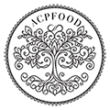
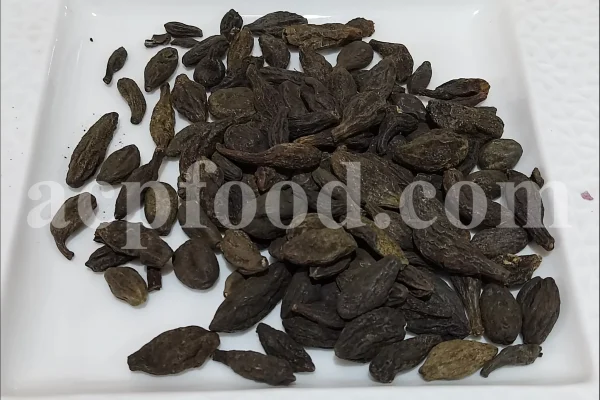

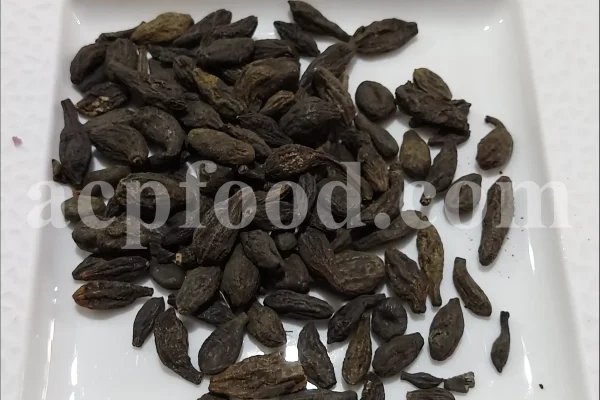
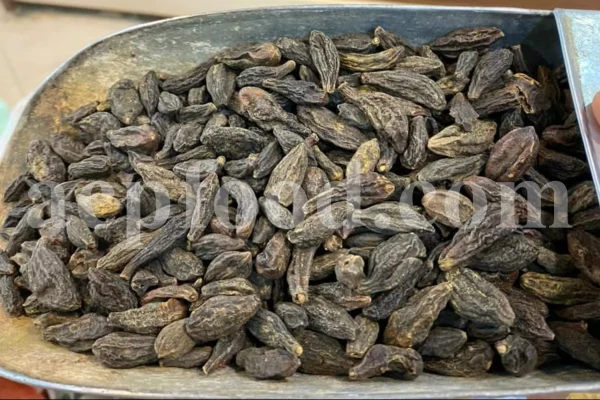

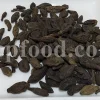
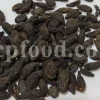
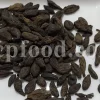
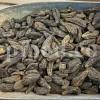
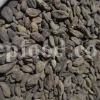
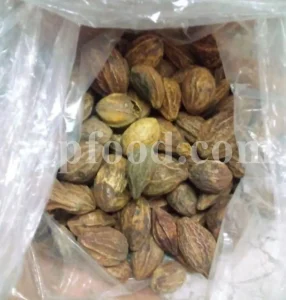
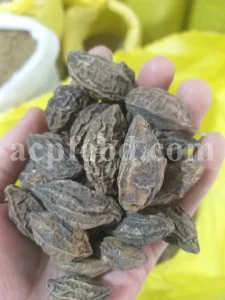
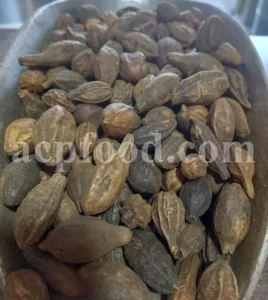
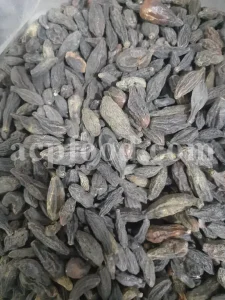
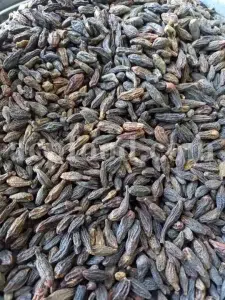
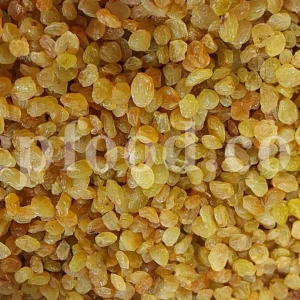
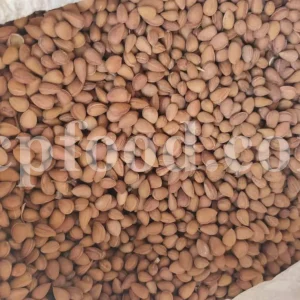
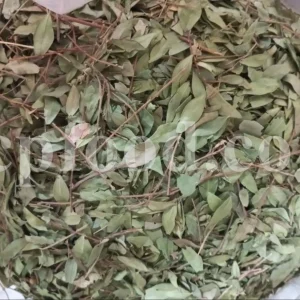
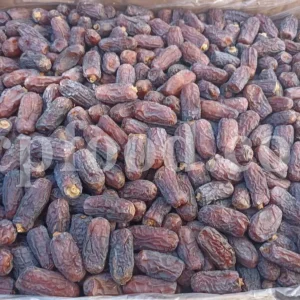
Reviews
There are no reviews yet.